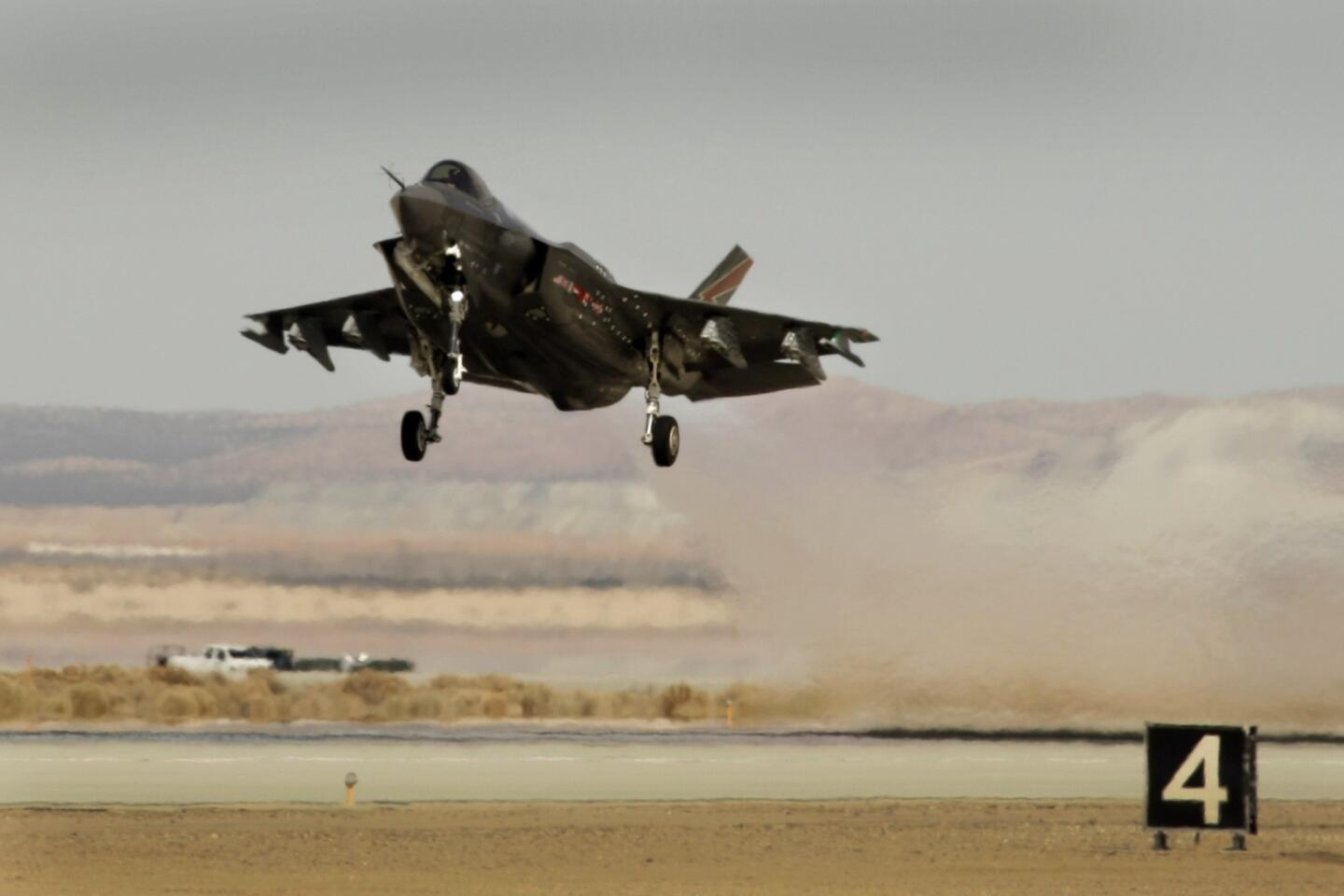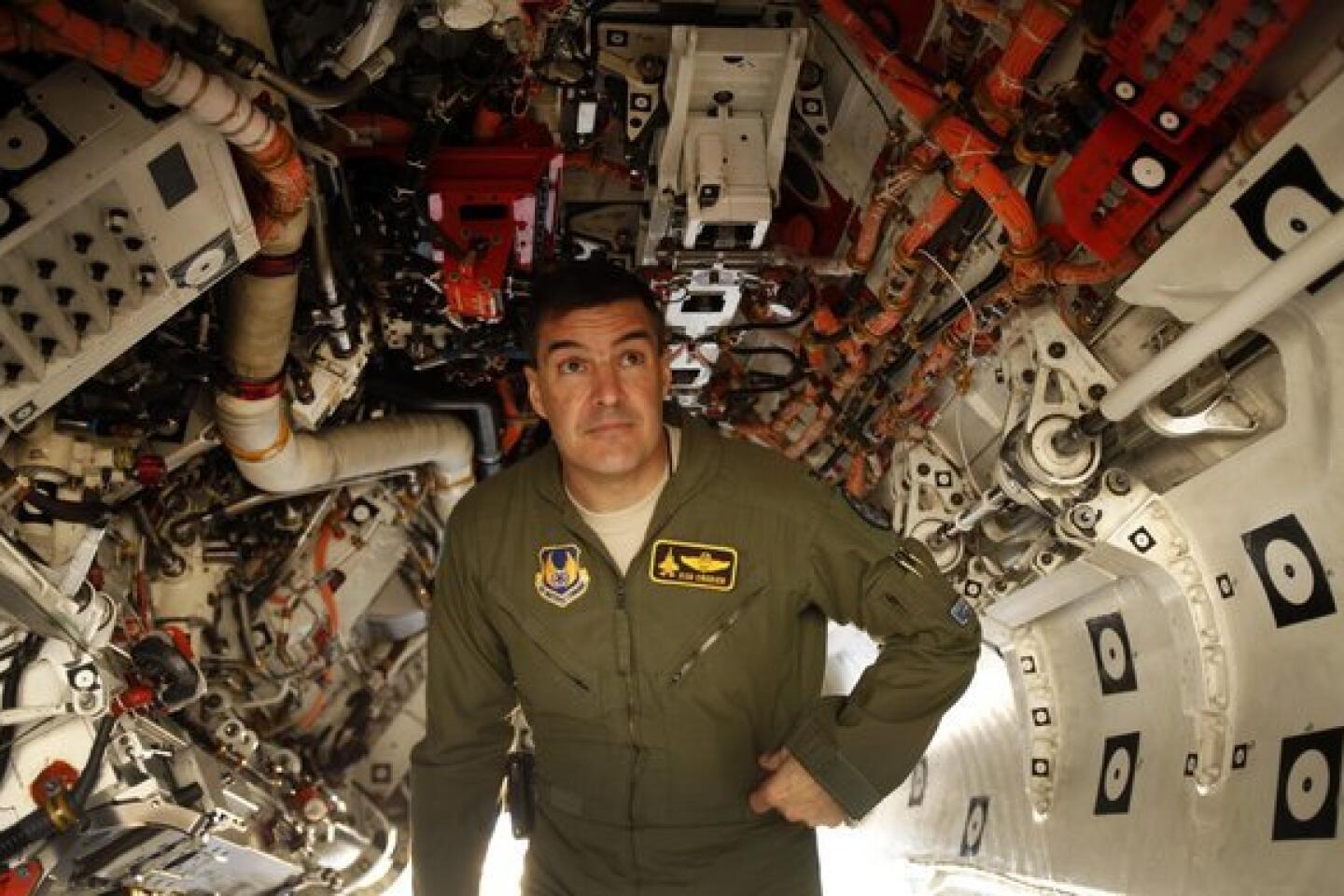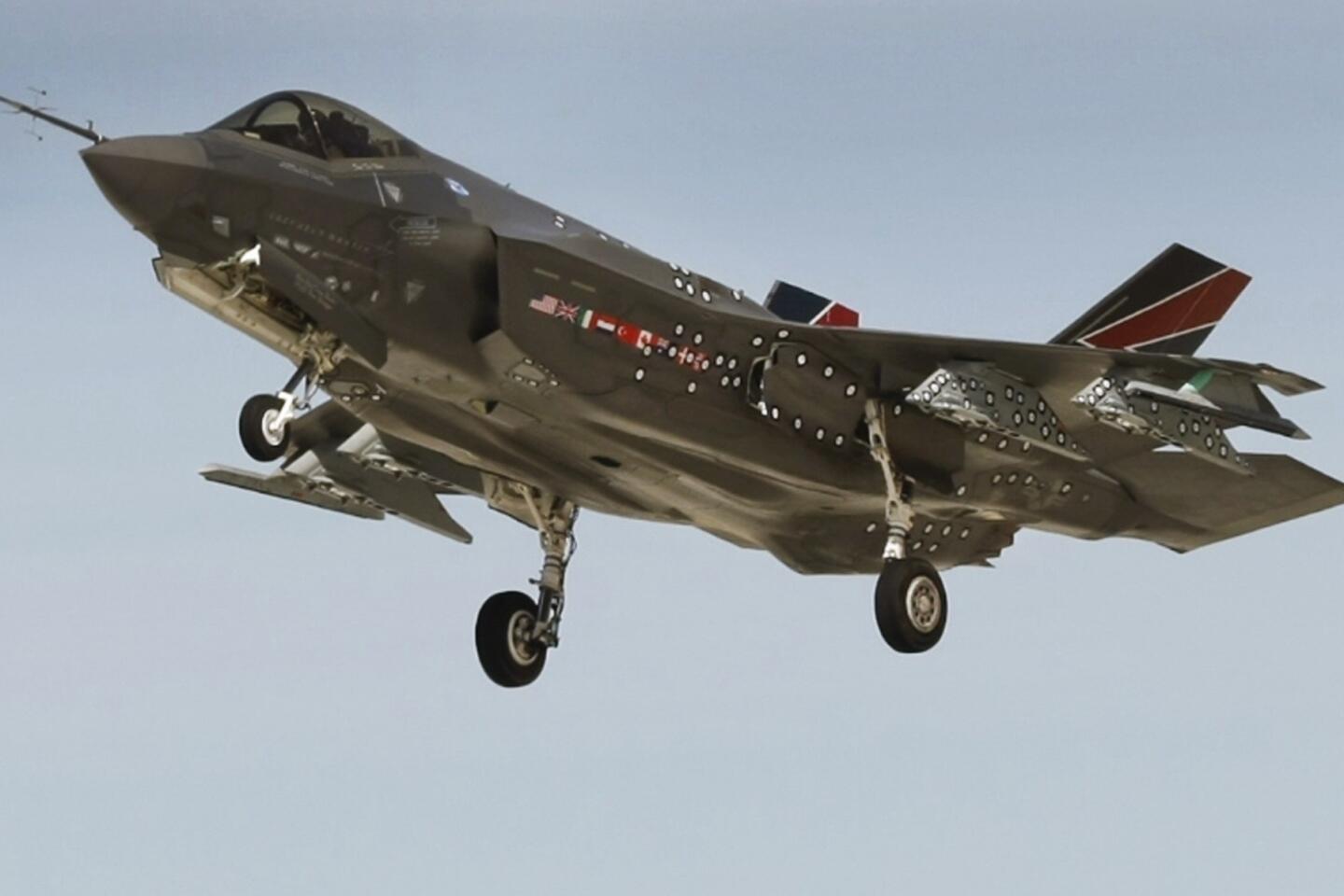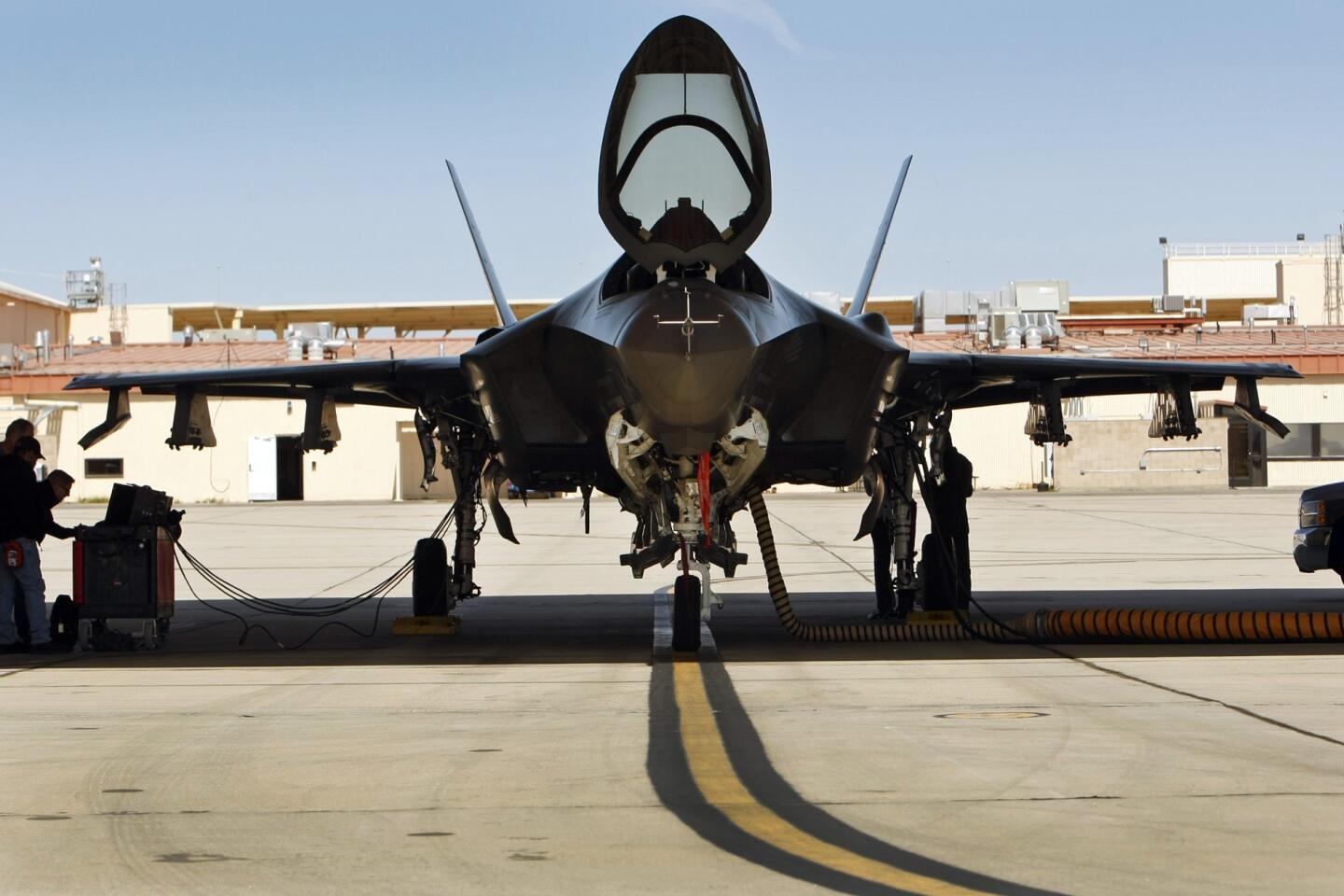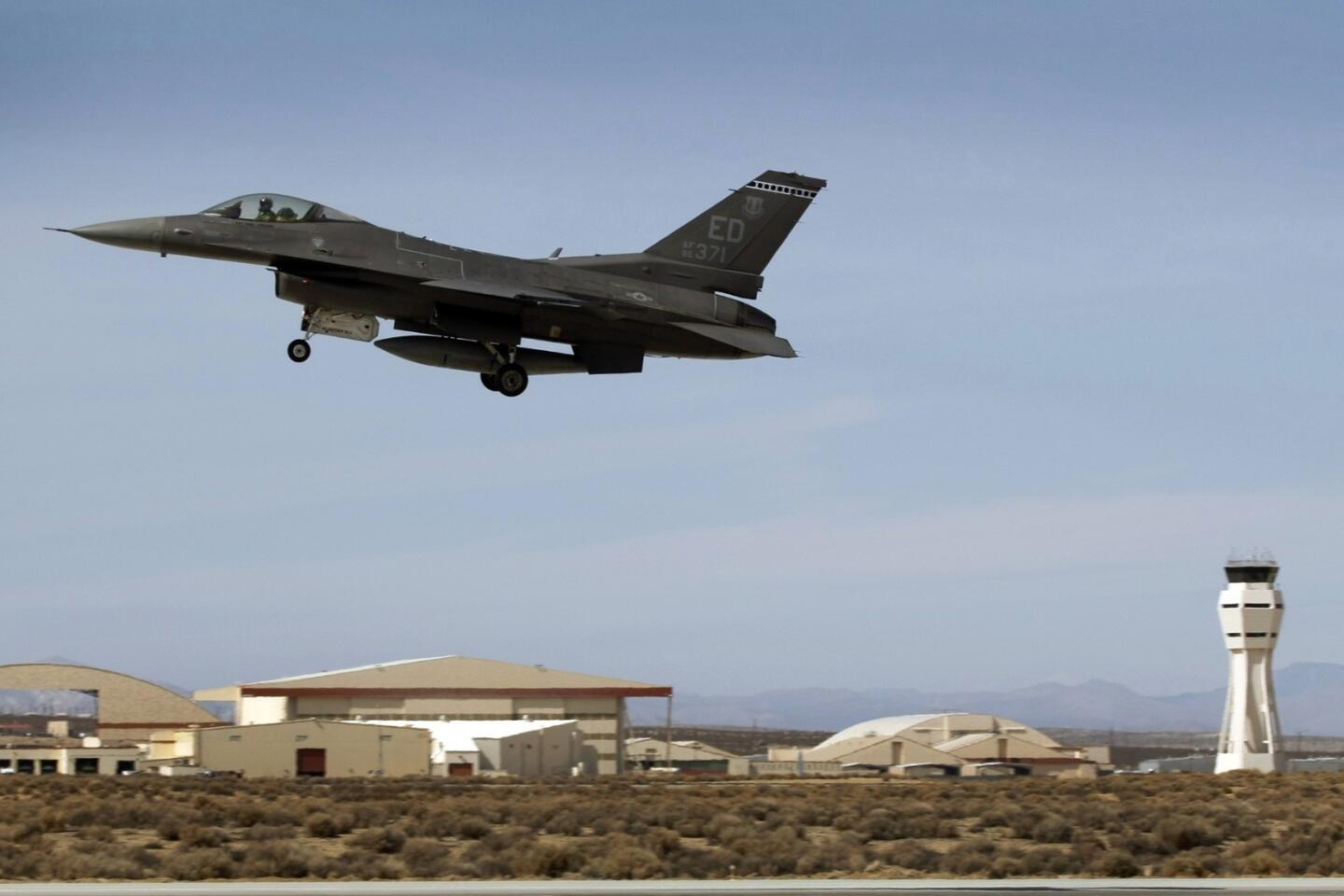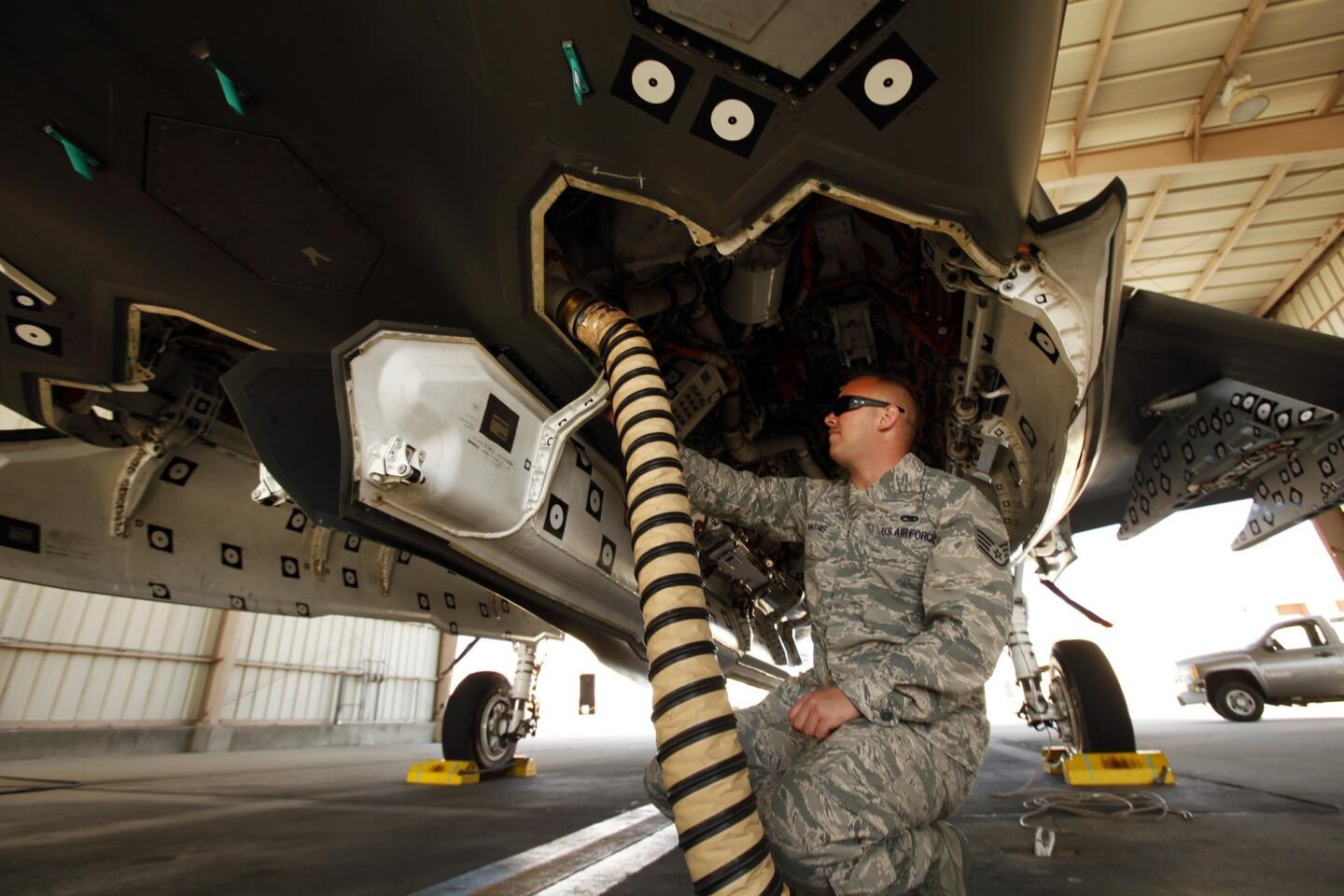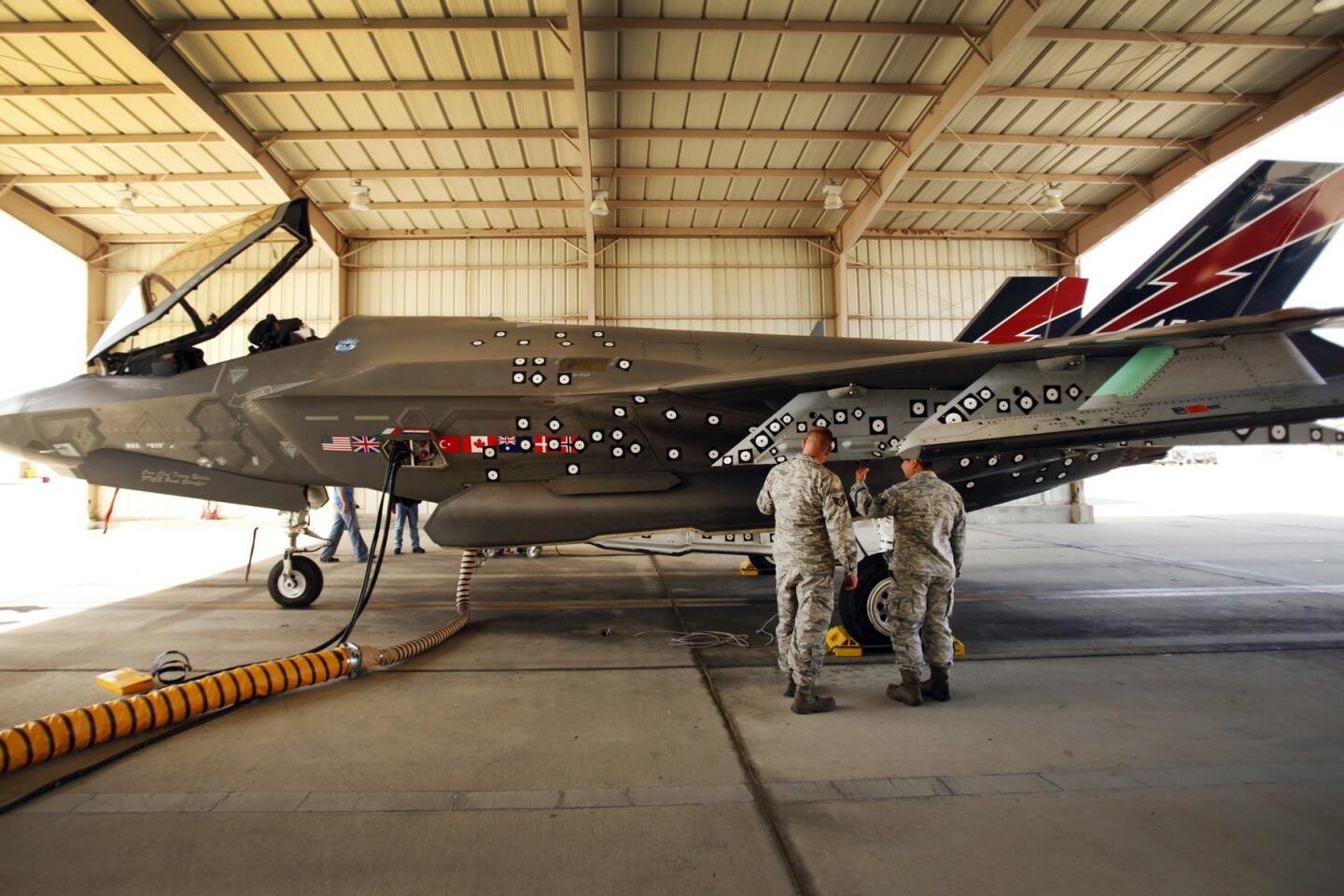Lockheed exaggerates number of jobs on F-35 program, new report says
- Share via
Lockheed Martin Corp.’s claims that the development and construction of the nearly $400 billion F-35 Joint Strike Fighter will sustain 125,000 jobs in 46 states is “greatly exaggerated,” according to a new report by a research center.
The Center for International Policy, a Washington nonprofit, released a report, “Promising the Sky: Pork Barrel Politics and the F-35 Combat Aircraft,” that says the number of program-related jobs cited by Lockheed is “roughly double” what it will actually create.
Lockheed, the world’s largest defense contractor, said that 32,500 direct jobs and 92,500 indirect jobs will be created by the F-35.
INTERACTIVE GRAPHIC: Lockheed’s political reach
“The ratio of direct jobs to total jobs in the Lockheed Martin estimate far exceeds the ratio suggested by other studies in the field,” said William D. Hartung, the study’s author and frequent Pentagon critic.
Lockheed spokesman Michael Rein said the company sticks to its numbers and methodology.
“We calculate the jobs impact for our programs using methods accepted by industry and leading economists,” he said. “We expect the positive U.S. economic impact to continue to grow as F-35 production volume increases.”
The F-35 is the largest-ever weapons program under development for more than a decade. Lockheed is developing three versions of the F-35 for the Pentagon.
VIDEO: Watch F-35 fighter come in for its first nighttime vertical landing
Called the Joint Strike Fighter program, it is centered on a plan to develop one basic fighter plane that could -- with a few tweaks -- be used on runways and aircraft carriers, and hover like a helicopter for joint use by the Air Force, Navy and Marines.
More than 100 of the planes have been built at Lockheed’s final assembly plant in Fort Worth. Engineering work and parts for the jets are built all over the world.
Each day, test pilots are expanding the edges of the F-35’s flight envelope at Edwards Air Force Base and Naval Air Station Patuxent River.
If the plane is successful, it will be the first time that a fighter jet will have supersonic speed, radar-evading stealth and short takeoff/vertical landing capabilities.
The Pentagon’s long-term vision is to replace today’s aging fighter fleets with 2,457 F-35s.
INTERACTIVE GRAPHIC: Three fighter jets in one
The Government Accountability Office estimated the program would cost an unprecedented $12.6 billion a year on average through 2037 — that’s an average of about $1.4 million an hour for the next 2½ decades.
The per-plane cost estimates have climbed to $161 million today from $81 million in 2001, the GAO said.
The Marine version is expected to be the first of the three versions to go into service. It’s scheduled to be delivered in 2015. The Air Force would be second to get operational F-35s when its version goes into service in 2016.
ALSO:
Virgin Galactic spaceship hits new heights in supersonic flight
Boeing probing Japan Airlines’ battery issue on 787 Dreamliner
Airbus has record year in aircraft orders while trailing Boeing in deliveries
More to Read
Inside the business of entertainment
The Wide Shot brings you news, analysis and insights on everything from streaming wars to production — and what it all means for the future.
You may occasionally receive promotional content from the Los Angeles Times.
